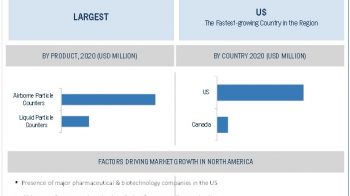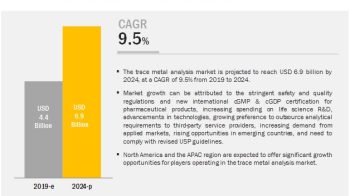
Key factors driving growth in Lab Automation Market –
Factors such as process
miniaturization, high demand for lab automation equipment in drug discovery and
clinical diagnostics, higher reproducibility and accuracy, and large workforce
demand and supply gap are likely to drive the growth of this market. In
addition, lab automation offers enhanced productivity and reduced costs, better
personnel safety, and small volumes of samples and reagents.
How the Lab Automation Industry will grow in coming years?
The global lab automation market is expected to reach USD 5.20 Billion by 2022 from USD 4.06
Billion in 2017, at a CAGR of 5.1%.
The
Objective of Research is as Follows:
1. To define,
describe, and forecast the global market on the basis of product, application,
end user, and region.
2. To provide detailed information regarding the major factors influencing the
growth of the market (drivers, opportunities and industry-specific challenges).
3. To strategically analyze micromarkets with respect to individual growth
trends, future prospects, and contributions to the overall market.
4. To analyze the opportunities in the market for stakeholders and provide
details of the competitive landscape for the market leaders.
5. To forecast the size of the market with respect to five regions: North
America, Europe, Asia Pacific, and the Rest of the world.
Download PDF Brochure:
https://www.marketsandmarkets.com/pdfdownloadNew.asp?id=1158
The Automated Workstations to Dominate The Industry:
The automated
workstation segment is expected to account for the largest share of the lab
automation market. The high demand for automation in liquid handling is the key
factor driving market growth in this segment. Automated workstations offer
advantages such as enhanced accuracy, and reduced time and cost.
Lab Automation in Pharmaceuticals and Biotechnology Industry:
The biotechnology & pharmaceutical companies segment is expected to
account for the largest share of the lab automation market. Factors such as
increasing product intricacy, pricing pressure, high cost incurred by errors,
and need for consistency in quality are driving biotechnology and
pharmaceutical companies to adopt automation and accelerate the drug discovery
process.
Regional Growth and Demand Analysis of Lab Automation Market:
Based on region, the lab automation market is segmented into North America,
Europe, Asia Pacific, and RoW. In 2017, North America is projected to account
for the largest share of the global lab automation market. The demand for lab
automation in North America is driven by the increasing number of investments
in research and innovation by the government, large presence of pharmaceutical
R&D labs in this region, and lab automation adoption by hospitals and
clinical diagnostic labs due to increasing volume of tests.
Request Sample Pages:
https://www.marketsandmarkets.com/requestsampleNew.asp?id=1158
Key Players in Lab Automation Market and Growth Strategies Adopted by Them:
In 2017, Tecan
(Switzerland) is expected to dominate the lab automation market. Some of the
other players competing in this market are PerkinElmer (US), Danaher (Beckman
Coulter & Molecular Devices) (US), Thermo Fisher (US), Agilent Technologies
(US), Hamilton Robotics (US), Abbot Diagnostics (US), Eppendorf (Germany),
QIAGEN (Netherlands), Roche Diagnostics (Switzerland), and Siemens Healthcare
(Germany).
Tecan was the leading player in the global laboratory automation market in
2016. Tecan has maintained its footprint in the global lab automation market
through continuous innovation and development of new products and their
commercialization in different regions. The company also focuses on
collaborations and acquisitions in order to expand its market share. The
company acquired SPEware Corporation (US) and Pulssar Technologies (France) to
enhance its presence in the market. Tecan has an extensive product portfolio
for lab automation and further focuses on enhancing its presence in the market
by adopting organic as well as inorganic growth strategies.
In 2016, PerkinElmer ranked second in the global lab automation market. It is
engaged in providing technologies, services, and solutions to the diagnostics,
research, environmental, industrial, and laboratory services markets. The
company has a robust product portfolio for lab automation.

